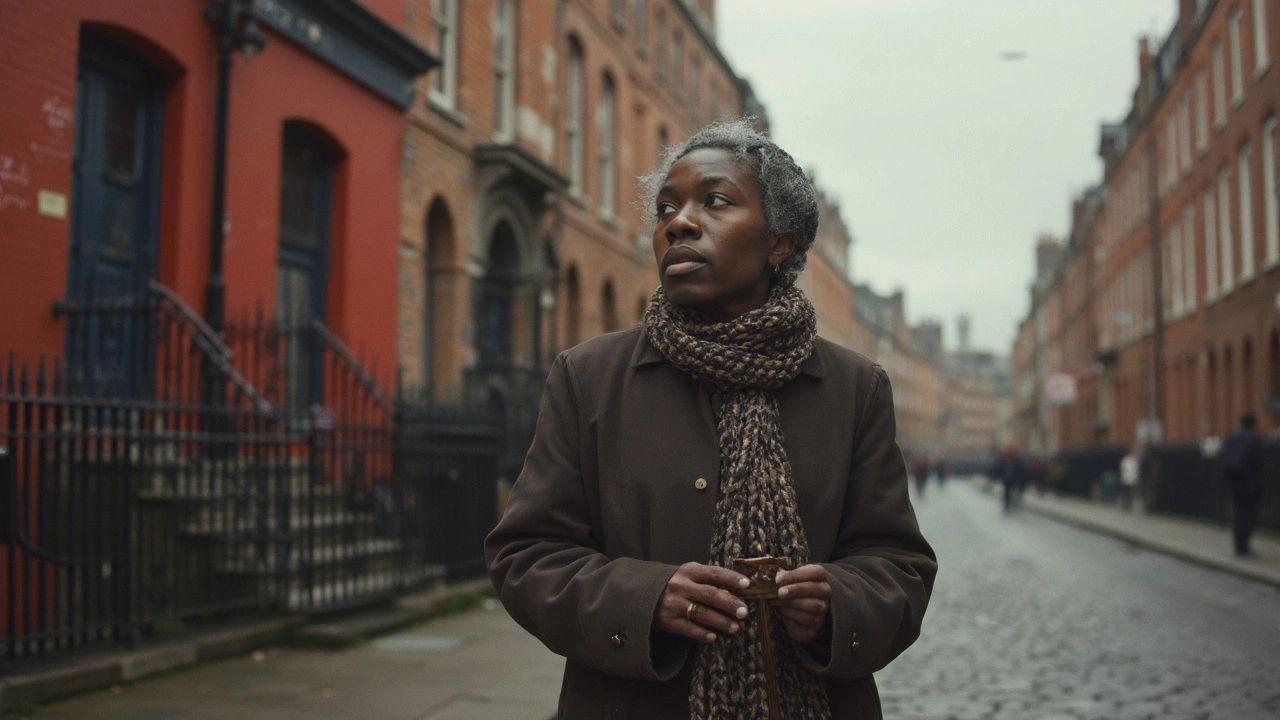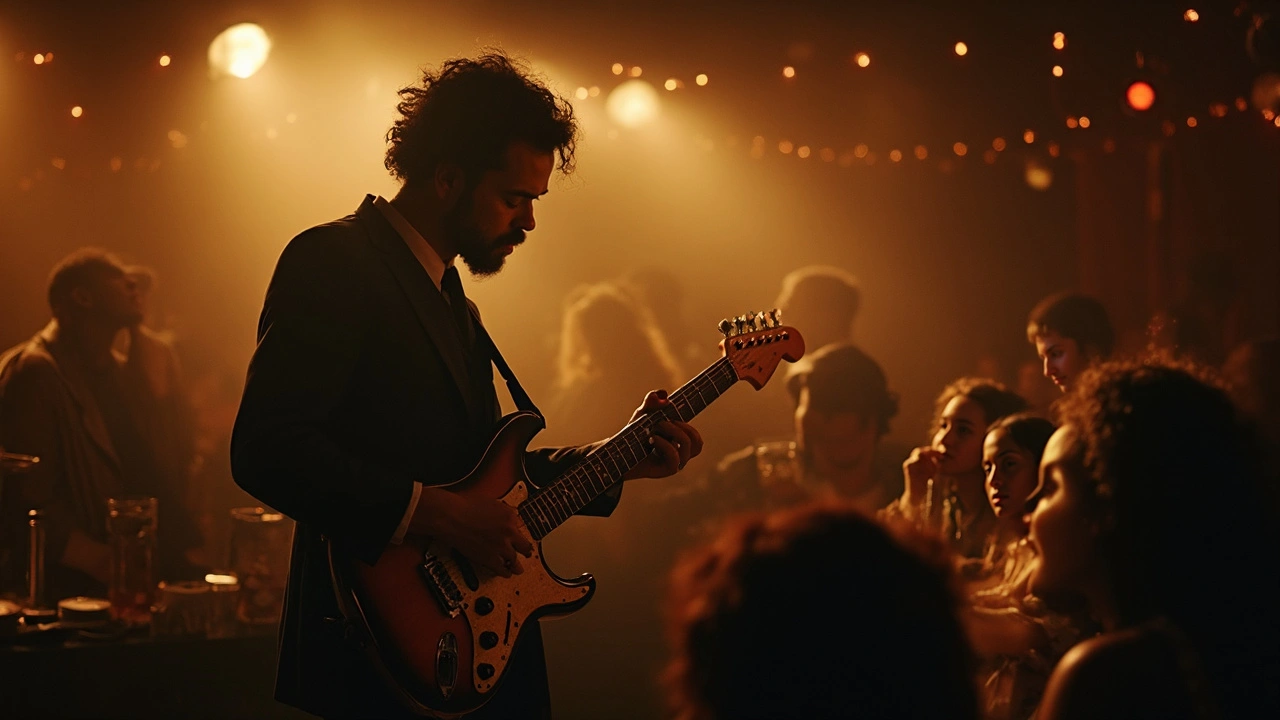Blues music hits differently, doesn’t it? It's the kind of sound that taps right into the soul, pulling out emotions you didn’t even know you had. Maybe it’s the raw honesty in those guitar riffs or the way the lyrics speak to anyone who's ever had their heart broken or dreams dashed. Blues isn't just music; it's an entire wavelength of feelings.
What’s cool about blues is its history. It didn’t just pop out of nowhere. Born from African American communities in the Deep South at the turn of the 20th century, it carries with it stories of struggle, hope, and resilience. It's like each note tells a story of a past trying to carve its way into the future.
- The Roots of Blues
- Emotion at Its Core
- Blues' Cultural Impact
- Modern Interpretations
- Learning and Playing Blues
- Blues' Future in Music
The Roots of Blues
Picture this: it's the early 1900s in the Deep South, and life is anything but easy. This is where blues music took its first steps. Originally a form of expression for African American workers, blues was like a musical escape from the harsh realities they faced every day. It wasn’t just about hardship, though; it was about channeling emotion in the purest form.
The blues came from a place of storytelling, mixed with African musical traditions, work songs, and spirituals. Slaves and their descendants sang to maintain a sense of identity and community. You could say blues became their voice. The rhythm and call-and-response patterns in blues echoed the communal aspect of this music—it was never meant to be solitary.
If someone's got the blues, you know they’re feeling it deep within. The structure of blues music often follows a 12-bar form, but it’s the simplicity that gives it power. It's made up of three lines to a verse – two of the same and one different. So, it’s not just how the lines are sung, it's also what's in between those lines.
Some of the earliest blues musicians like W.C. Handy, referred to as the 'Father of the Blues,' helped to popularize the genre. But the beauty was that anyone could join in. This inclusivity meant the music evolved over time, with each generation adding their own flair.
By the 1920s, blues had moved into urban areas like Chicago and New York, influencing a whole new wave of music. This move led to the electrification of the blues sound, giving way to what we now know as electric blues. So, whether strumming on a porch in Mississippi or jamming in a Chicago nightclub, the roots of blues laid the groundwork for countless genres that followed.
Emotion at Its Core
Have you ever wondered why blues music feels like it's tugging at your heartstrings? It's because, at its core, blues is all about emotion. Whether it's joy, pain, love, or loss, every song has a raw emotional honesty that makes it relatable to so many people.
The beauty of blues lies in its simplicity. Unlike other genres that may rely on elaborate compositions, blues often sticks to a 12-bar structure. This simplicity doesn’t limit it; rather, it provides a canvas for musicians to pour their feelings into each note and lyric. It's fascinating how a simple guitar riff or a heartfelt lyric can capture emotions we sometimes struggle to explain.
And let’s not forget the vocal delivery. The best blues singers are storytellers at heart. They know how to turn phrases in ways that resonate on a deeply personal level. The quiver in their voice can speak volumes, turning personal tales into universal experiences.
Interestingly enough, blues has evolved, yet its emotional core remains untouched. Artists like B.B. King and Muddy Waters shaped the roadmap for what blues would become, with King famously remarking, "The beautiful thing about learning is nobody can take it away from you." This resonates with how the emotive power of blues continues to inspire generations.
- The simplicity of blues allows for complex emotions to shine.
- Vocal delivery is crucial in conveying the message of a song.
- Blues guitar work often mirrors the emotional tone of the vocals.
So, next time you’re feeling those deep, bluesy emotions, put on some classic blues tracks. You might just find the solace you’re looking for.
Blues' Cultural Impact
So, you’re probably wondering, what makes blues music not just a sound but a cultural phenomenon? Well, for starters, it laid the groundwork for a lot of the music we love today. Think about it: jazz, rock and roll, even hip-hop owe a huge debt to the blues. If you dig deep, you'll find its influence everywhere.
Let's chat about the impact blues had on the Civil Rights Movement. During the 1960s, the messages in blues helped bring people together. Artists like B.B. King and Muddy Waters were more than just musicians—they were voices of change. The music spoke to injustice and resilience, ringing true in the hearts of many fighting for equality.
"The blues is a chair, not a design for a chair, or a better chair... it is the first chair." – John Lennon
Now, given how it spread, blues didn’t stay local for long. Once it hit Europe, it sparked a music revolution. Bands like The Rolling Stones and Led Zeppelin took those roots and grew something new. Putting a spotlight back on American blues artists, they made sure the sound traveled far and wide, crossing borders and oceans.
- Chicago Blues changed urban landscapes, influencing musicians globally.
- Delta Blues captured raw emotions of Southern life, recounting stories that became universal.
In terms of social impact, the blues broke some serious barriers. It's been a binding force that showed people—across races and cultures—that everybody has a story worth telling. Just imagine, a simple yet powerful musical form from rural America becoming a beacon of cultural connection.

Modern Interpretations
Blues music is like a chameleon. It evolves while still holding onto its roots, adapting to different times and techniques. In the 21st century, we see the blues music shape-shifting through artists who blend it with rock, pop, and even electronic sounds. This fusion brings a fresh twist, reaching younger audiences who might not be familiar with traditional blues.
Modern blues artists like Joe Bonamassa and Gary Clark Jr. are prime examples. They take classic blues structures and dash in some rock and roll spice. Bonamassa, in particular, has redefined the genre with his powerful guitar skills and deep voice, drawing crowds worldwide.
Streaming platforms have also opened new doors for blues music, making it accessible to anyone with an internet connection. With a sprinkle of search skills, you can stumble onto incredible new blues tunes that might've stayed hidden back in the day.
Blues festivals are bigger and better, too. Events like the Chicago Blues Festival or the annual Beale Street Music Festival in Memphis attract a mix of legends and newbies, giving fans a taste of both old and new. These gatherings are like massive cookouts where everyone gets a plate full of soulful delight.
The beauty of modern blues is in its storytelling. While it might sound different with electronic beats or pop rhythms, at its heart, it's sharing experiences that everyone can relate to. So, yes, blues music continues to be a mighty force, bridging past and present with every soulful note.
Learning and Playing Blues
Picking up blues music might seem complex, but it’s really all about feeling and flow rather than precision. If you're intrigued by this soulful genre, here's how to jump in and strum along.
First, get a guitar—it doesn’t need to be fancy. An acoustic with steel strings is a great starting point, but, hey, if you have an electric guitar lying around, that's perfectly fine too. What matters is getting acquainted with the basics.
The magic of blues lies in the twelve-bar blues pattern. This pattern is your friend, the backbone of countless blues songs. It’s pretty straightforward:
- Play the I chord for four measures.
- Switch to the IV chord for two measures.
- Back to the I chord for two measures.
- Go up to the V chord for one measure, then the IV chord for one measure.
- Wrap it up with two more measures on the I chord.
Once you've got the hang of this, try adding a classic blues scale to your toolbox. It's a simple pattern that makes improvisation a breeze and gives your solos that authentic blues sound.
And what about rhythm? Well, it's all about the swing feel. Blues often uses a shuffle rhythm, which has a distinct swinging quality. Don’t stress; your ears will guide you there once you’ve listened to enough tracks from legends like B.B. King or Muddy Waters.
Another awesome thing about learning the blues is that it’s a communal genre. Jam sessions are common, where musicians of all levels come together to play. These gatherings are not only fun but a great way to learn from others, share tips, and improve your skills.
Remember, the heart of the blues isn’t technical perfection. It’s about emotion and expression. Keep experimenting with what feels and sounds good to you. Your unique take will become your signature.”
Blues' Future in Music
The future of blues music looks bright, even though some might say it's an old-school genre. It's not disappearing; it's evolving. Think of it like your favorite pair of jeans—classic yet always adapting to fit the times. Who would have guessed that it could mix so well with modern styles like hip-hop and electronic?
In recent years, young artists have been stepping into the blues music scene, bringing fresh energy and new perspectives. Musicians like Gary Clark Jr. are blending blues with rock and contemporary high-energy styles, keeping the spirit alive while inviting a younger audience to the party. This fusion doesn’t dilute the essence of blues; instead, it amplifies its reach.
With platforms like YouTube and Spotify, discovering and sharing blues music has become a lot easier. A kid in Mumbai or someone chilling in Sao Paulo can stumble upon a blues track and become a fan in an instant. This global access means more voices, more reinterpretations, and a richer, more diverse blues sound.
The numbers back up this optimism. According to recent data, blues playlists have seen a growth in streaming by 20% over the past two years. This rise shows folks are not just curious; they’re genuinely tuning in and engaging with the genre across the globe.
The digital age is also inspiring innovators to play around with tech in the blues world. From virtual reality concerts to apps that help you learn guitar—the possibilities are endless. There's even tech collabs happening where AI is used to compose or improvise blues music, blending human creativity with machine learning.
The future isn’t about the blues relinquishing its roots; it’s about keeping those roots while branching out to new audiences. So, while the stories of heartbreak and perseverance continue to resonate, their delivery is adapting to the beat of today’s world. Like it or not, blues music isn’t just holding on—it’s thriving.

